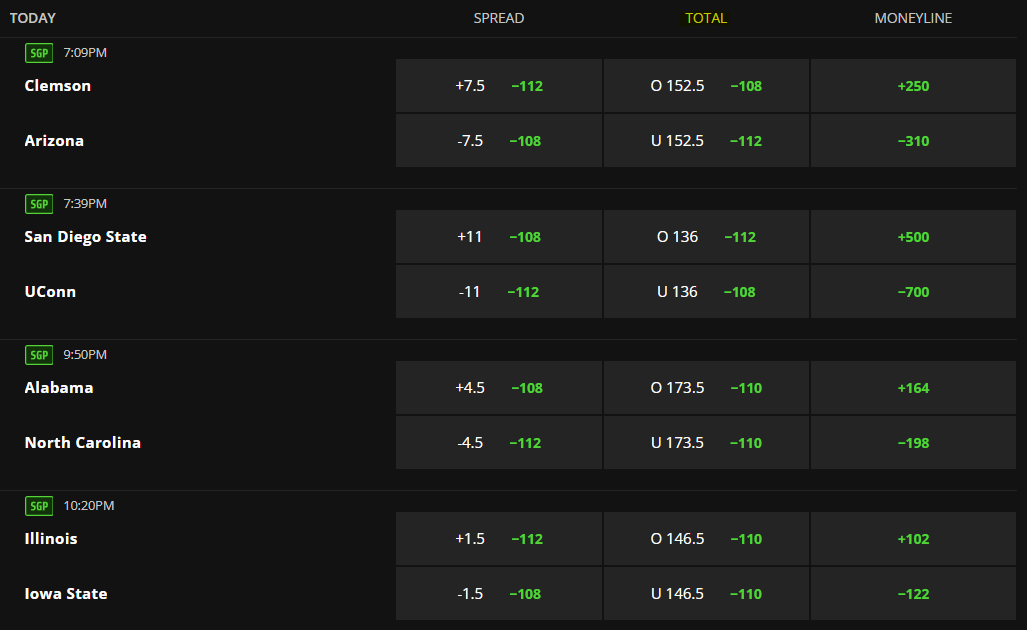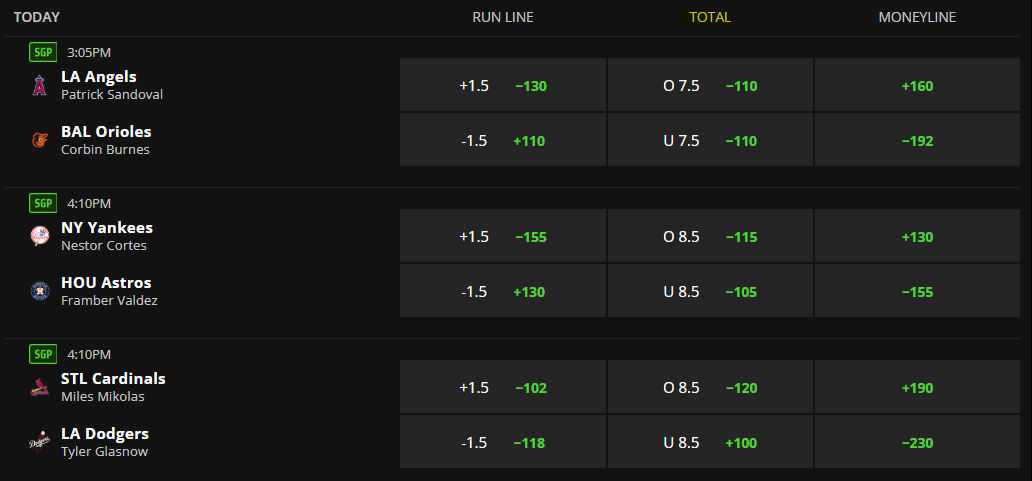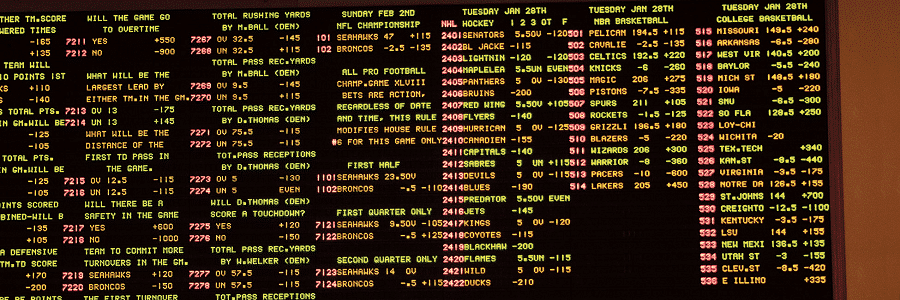One of the most popular forms of sports betting is over/under, or totals, betting. This is not only one of the most popular betting markets out there, but it is also one of the easiest markets to understand in terms of how it works. Here, we break down what over/under betting is and how bettors can get involved with it as successfully as possible.
What Is an Over/Under or Total Bet?
The winner of an over/under, or total bet is determined by adding the final score of both teams together. There is no need for overcomplication, it really is that simple.
In many instances, bettors believe it is easier to predict the total of a game rather than the actual winner of a game on the moneyline. Sportsbooks tend to agree with that sentiment, as the betting limits on totals are smaller than they are for sides. Totals, also referred to as over/under bets, are a type of betting market where gamblers opt to bet that the final score of a game goes over or under the bookmaker’s posted total.
For example, let’s say the New York Jets are playing the Miami Dolphins in NFL action and the posted total is 40. If you bet over 40 on the game, you win your bet if the two teams combine for more than 40 points. If the Dolphins win 24-17, for example, you’ve made a winning bet. If the Dolphins win 24-14, you’d lose your over bet, as the final combined score was just 38. Conversely, bettors that went the other way, would win an under bet. If the final score adds up to 40, the bet is considered a push, or tie, and bets on the total of 40 would be refunded.
Betting Over/Under Totals in NFL, NBA, College Basketball & Football
When betting on football and basketball totals, generally speaking, you lay -110 odds. This means the risk is $11 to win $10, just as it is when making a bet against the point spread. If a sportsbook can attract equal amounts of money on the over and under, it’s guaranteed to make a profit on that total on any outcome that is not a push.

Most NFL football totals will range between 33 and 54, with an average number right around 44 points. If two high-scoring teams with poor defenses are playing each other, the total may be higher. On rare occasions, two sound defensive teams or teams using backup quarterbacks could play, which can result in totals in the low-30s, although the polar ends of high and low totals are quite infrequent.
College football totals can be set significantly higher, thanks to the pace of play and other factors that benefit offenses. In the college game, some teams have great offenses and benefit from equally poor defenses. College football totals have often been set well into the 70-point range. There is also the potential for totals in the 30s in games like those between service academies such as Army and Navy.
Basketball totals work in exactly the same manner as football totals, where you risk $110 to win $100. Naturally, the over/under numbers are much higher, as many more points are scored in basketball than in football games, and totals can range from 110, for a pair of low-scoring college basketball teams, well into the 260s for an NBA game.
Betting Over/Under Totals in MLB or NHL
Baseball and hockey over/unders use the same principle as football and basketball totals, where the bookmaker posts a number and you can bet either over or under that total. However, one essential difference rests in the amount of money a bettor must risk to win $100.

Because scoring in baseball and hockey is so much lower than in football or basketball, the bookmakers are reluctant to change the betting figure on a total. Instead, they will frequently adjust the odds. If the over/under number on an MLB game between the Cardinals and the Dodgers is 8.5 and a bettor places a significant wager on the over, the bookmaker is unlikely to raise the total to 9.
Instead, the odds for bettors who wish to wager on the over could increase to -120, meaning risking $120 to win $100 on the same total of 8.5. In an instance such as this, those wishing to bet the under would then be able to wager at even money or +100. This is because the difference between the over and the under is typically 20 cents based on a $1 bet.
If people continue to bet the over, the bookmaker will continue to adjust the odds upward and eventually bettors may have to risk $145 to win $100, or -145. In this case, an under bettor would risk $100 to win $125. The bookmaker will generally raise the odds up to -145 or -150 before raising the total to the next number in baseball, in this case, 9. Hockey totals use the same principle, with totals typically ranging from 5.5 to 7.5 goals in the NHL.
How Are Over Under/Totals Made?
Football and basketball totals are made in the same manner as point spreads, as they’re designed to attract equal amounts of money coming in on both the over and under. Again, for the sportsbooks, a balanced ledger that makes a profit regardless of the final score is the ideal situation.
Baseball and hockey totals more closely resemble money-line odds. The books often know they’ll receive more money on the under or over on a particular game, but are hoping to attract enough bets on the opposite with the odds increase to balance the action. When a sportsbook releases a total on an NHL game of over 5.5 at -140, meaning you must risk $140 to win $100 if you bet the over, the sportsbook has a good idea there will be more over than under bets. The +120 figure on the under is designed to attract enough under wagers to cover their losses should the game land over the total.
Sportsbooks also know that they’re likely to receive more over bets on a game than they are under bets. The betting public prefers to bet overs, as it’s more fun to root for scoring than it is for defense, regardless of the sport in question. As a result, totals are often slanted a bit towards the over, especially in football. Football, particularly the NFL, is the most popular betting sport, and that’s the reason many winning gamblers will have more under bets than their peers in many cases.
In an example from the 2017 NFL season, overs were 111-132-8 (45.7%). In college football, overs were 364-428-21 (46%). Those percentages are a bit lower than they have been long-term, but both the NFL and college football are under 50% on overs in totality since the start of the 2000 season.
Why Do Over/Under Betting Totals Move?
Just like point spreads and moneylines, totals move due to amounts of money wagered one way or the other. If more money is being bet on the over, sportsbooks are likely to raise the total to try and attract bets on the under and discourage bets on the over and vice versa. As you saw in the earlier example, the figure raised in football or basketball is the total itself – from 43 to 43.5. In baseball or hockey, the odds would be the figure that moves before the total itself. In the aforementioned example, from over 8 (-115) to over 8 (-120). Additionally, injuries, suspensions, and even the weather can cause totals to move.
Unless it’s an injury to a star quarterback, such as Patrick Mahomes, or someone of equal importance in college football, injuries or suspensions generally don’t have a massive impact on totals. Weather can be a much bigger influence on totals for outdoor sports. Football games played in rain or snowy weather will see the total drop, while in baseball the Chicago Cubs are the best example, as their totals can be 11 or 12 if the wind is blowing out and 8 or 9 with the same two pitchers if the wind is blowing in.
Where To Bet on Over/Unders
Every legal online sportsbook offers over/under action on every game they accept action on, given how popular a betting market this is. But the below sportsbooks are the ones bettors should use to place their totals wagers, as these sites have the best reputations in the industry in the US today. Bettors can get started with these sites, and claim their new player bonuses, by clicking the Claim Offer buttons below and signing up for each site today.






More Sports Betting Topics
- Sports Betting Dictionary, Terminology & Bet Types Meanings
- 4 Tips For Making Successful Bets
- Basketball Betting Guide – How To Bet On Basketball
- What Are First Half and Halftime Bets?
- Parlay Sports Betting
- What Are Prop Bets – How To Bet Proposition Bets
- Pleaser Sports Betting
- Teaser Betting
- Money Line Betting
- Point Spread & Betting Lines Explained
- What is Against the Spread
- What Does -110 Mean In Sports Betting? Betting Odds Explained
- What is Reduced Juice Betting?
- Bet To Risk vs Bet To Win – Wager Amount vs Risk Amount
- How To Read Rotation Numbers & Sports Betting Odds
- What Is a Progressive Parlay? How To Bet Progressive Parlays
- 3-Way Money Line

